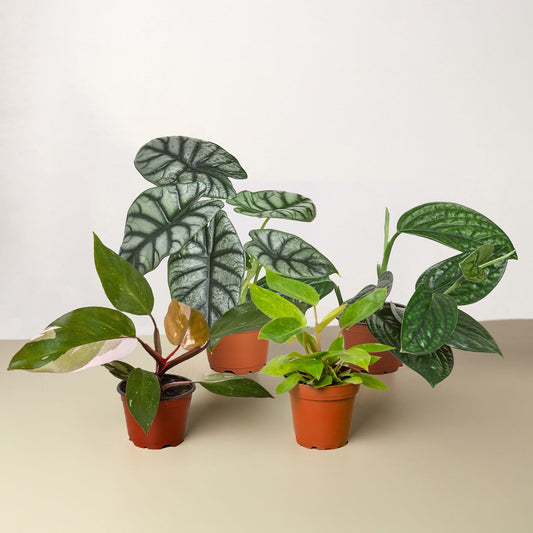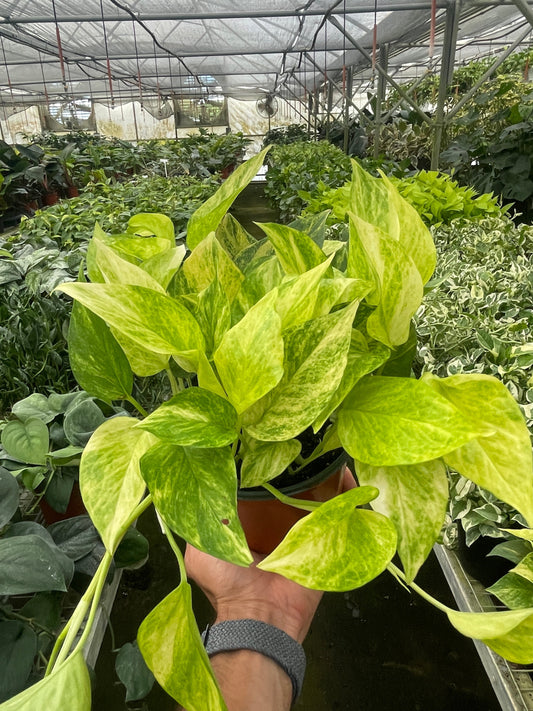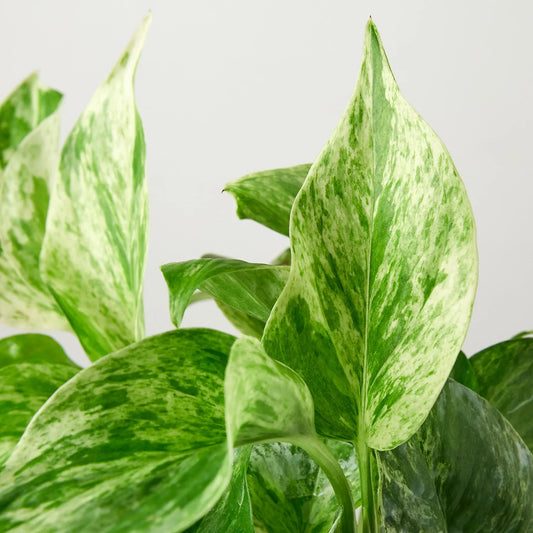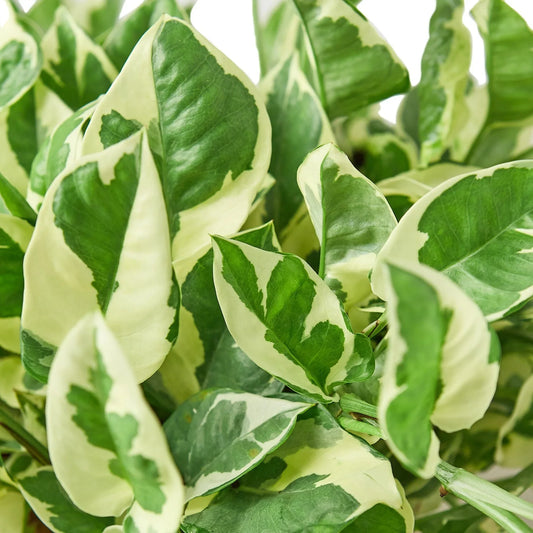How Much Light Does a Bird's Nest Anthurium Need?
Cafe Planta Team
Have you ever wondered about the light requirements of a Bird's Nest Anthurium? It's a question many plant lovers ask as they strive to create the perfect home environment for their green companions. This plant, with its striking foliage and unique growth pattern, can be a fantastic addition to your indoor garden, but understanding its lighting needs is crucial for its well-being.
In this article, we'll explore how much light a Bird's Nest Anthurium really needs. We'll go through various factors that influence its lighting conditions, provide practical tips for optimizing its environment, and discuss how to troubleshoot common lighting issues. By the end, you'll feel more confident in providing the right care for your leafy friend.
Understanding the Bird's Nest Anthurium
The Bird's Nest Anthurium (Anthurium hookeri) is a tropical plant native to the rainforests of Central and South America. Known for its rosette-like arrangement of broad, glossy leaves, it can bring a touch of the exotic to any indoor space. But, like many tropical plants, it has specific light preferences that mimic its natural habitat.
In the wild, these plants grow under the canopy of larger trees, where they receive filtered sunlight. This means they are accustomed to indirect, dappled light rather than direct sunlight. Direct sunlight can scorch their leaves, while too little light can stunt their growth. Getting this balance right is the key to keeping your Bird's Nest Anthurium happy and healthy.
With this in mind, let's dive deeper into the specifics of how much light your Bird's Nest Anthurium actually requires.
Ideal Lighting Conditions
For a Bird's Nest Anthurium, the ideal lighting conditions are bright, indirect light. Picture the gentle sunlight filtering through the leaves of a tree on a sunny day—that's the kind of light these plants thrive in. Here’s how you can achieve this in your home:
- East or West-facing Windows: These windows receive bright, indirect light for most of the day. Position your plant a few feet away from the window to prevent direct sunlight exposure.
- Sheer Curtains: If your only option is a south-facing window, consider using sheer curtains to diffuse the light.
- Artificial Lighting: If natural light is scarce, fluorescent lights or LED grow lights can be a good substitute. Aim for lights that mimic the spectrum of natural daylight.
Remember, while these plants enjoy bright conditions, they’re not fans of direct sunlight. If you notice any browning on the leaves, it might be a sign that they’re getting too much direct light.
Signs of Too Much Light
It’s easy to think that more light means better growth, but for the Bird's Nest Anthurium, too much light can be detrimental. Here are some signs that your plant might be getting too much light:
- Leaf Scorching: Brown patches or tips on the leaves often indicate sunburn. This happens when the plant is exposed to direct sunlight for prolonged periods.
- Leaf Curling: Leaves that curl or become crispy are another indication of excessive light exposure.
- Faded Leaf Color: If the vibrant green of the leaves starts to fade, it might be due to overexposure to light.
If you notice any of these signs, consider moving your plant to a slightly shadier spot or adjusting the curtains to filter out more sunlight. It's all about finding that sweet spot where the plant receives enough light to thrive without getting damaged.
Signs of Too Little Light
On the flip side, not enough light can also be a problem. While Bird's Nest Anthuriums are forgiving and can tolerate lower light levels, prolonged periods of insufficient light can lead to issues such as:
- Slow Growth: If your plant isn't producing new leaves or seems to be growing at a snail's pace, it may not be getting enough light.
- Leggy Growth: Stems that are long and stretched out indicate that the plant is reaching for more light.
- Pale Leaves: Leaves that are lighter in color than normal could be a sign of inadequate light.
To remedy this, try moving your plant closer to a light source, or consider supplementing with grow lights if natural light is in short supply.
Seasonal Light Changes
The changing seasons can have a significant impact on the light your Bird's Nest Anthurium receives. As the days grow shorter in winter, you might notice your plant not getting as much light as it did in the summer.
During the winter months, you might need to adjust the plant's location to ensure it gets enough light. Moving it closer to a window or using artificial lighting can help maintain its light levels. Conversely, in the summer, be mindful of any changes in sunlight intensity and adjust accordingly to prevent leaf scorching.
Being aware of these seasonal shifts and ready to adapt your plant’s environment is crucial for its continued health.
Using Artificial Lighting
Artificial lighting can be a lifesaver for plant parents, especially those living in areas with long winters or limited natural light. Here’s how you can effectively use artificial lighting for your Bird's Nest Anthurium:
- Type of Light: Full-spectrum LED grow lights are ideal, as they mimic natural sunlight and provide the necessary wavelengths for plant growth.
- Light Placement: Position the light about 12-18 inches above the plant to mimic the distance of natural light.
- Duration: Aim for about 12-14 hours of light per day. A timer can be useful to ensure consistency.
Artificial lighting can be a great addition, providing flexibility and control over your plant’s environment, ensuring it gets the light it needs year-round.
Creating a Balanced Environment
While light is essential, creating the right environment for your Bird's Nest Anthurium involves balancing several factors. Here’s a quick checklist to ensure your plant is thriving:
- Humidity: These plants love humidity, so consider using a humidifier or placing a tray of water near the plant to increase moisture levels in the air.
- Temperature: Keep your plant in a warm spot, ideally between 65-75°F (18-24°C), and away from drafts or sudden temperature changes.
- Watering: Water when the top inch of soil feels dry, but avoid letting the plant sit in waterlogged soil.
Balancing these factors with the right lighting will help your Bird's Nest Anthurium thrive and maintain its striking appearance.
Troubleshooting Common Lighting Problems
Even with the best intentions, things can sometimes go awry. Here are some common lighting problems and how to fix them:
- Yellow Leaves: This could be a sign of overwatering, but it can also indicate too little light. Ensure you’re watering appropriately and adjust the light levels if needed.
- Spotty Leaves: Brown or black spots might indicate a fungal issue, often exacerbated by poor lighting and high humidity. Adjust light levels and improve air circulation around the plant.
- Growth Stagnation: If the plant isn’t growing, check the light levels first. Adjust the location or consider supplemental lighting.
Regularly check on your plant and be ready to adjust its environment as needed. A little observation and tweaking can go a long way in maintaining plant health.
Final Thoughts
Understanding the light needs of your Bird's Nest Anthurium can make all the difference in its growth and appearance. By providing bright, indirect light and adjusting for seasonal changes, you can ensure your plant thrives. Remember, it’s all about finding the balance that works best for your specific environment.
If you’re looking for more advice or want to add to your plant collection, Cafe Planta offers a variety of houseplants and accessories to help you create a lush indoor garden. We’re always here to help with any questions—just email us or drop a message on Instagram. We believe in the power of plants to bring joy and inspiration, and we’re excited to share that journey with you.



















